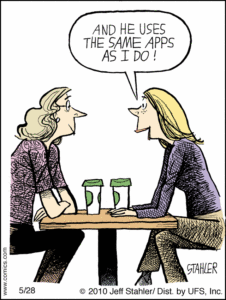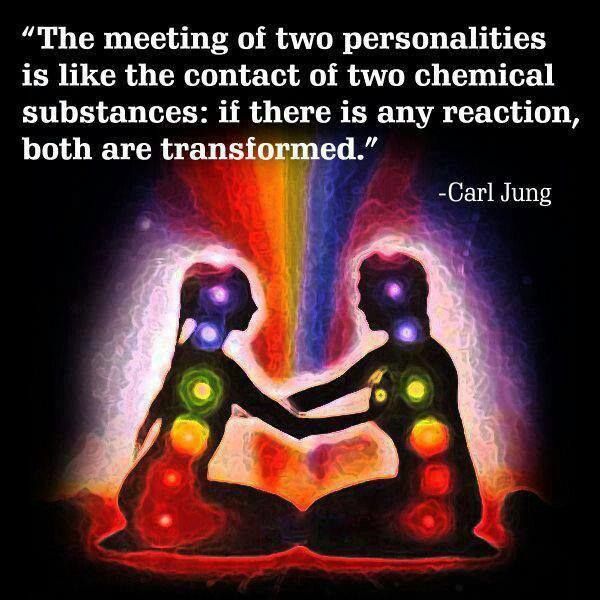
Everyone wants to feel that magical spark that comes from having chemistry in a love connection. But just because you’re experiencing an intense charge with another person does not mean they are right for you. Knowing the five different types of chemistry in relationships you could share with another person is key to finding the partner who is a good fit and with whom your share a strong connection. (Estimated reading time: 5 minutes)
“There is something beautiful about unforced bonds, the energy is real.”
— Dulce Ruby
Chemistry in the context of love and relationships is desirable and coveted. Who doesn’t want to experience that magic and spark with someone special?
When it does happen, the feelings are unmistakable and often defy reason. There exists a harmony between you, and you create a beautiful melody that flows naturally. Nothing feels forced, fake, or contrived. It just is.
The pull that draws you into the entirety of another person has been described with words like “knowing,” attraction, vibe, and soul bond. Movies offer visual cues on what this looks like. Timeless scenes from classics like Casablanca’s, “Here’s lookin’ at you kid,” and the Notebook’s “You are, and always have been, my dream,” make us squeal with delight.
The reason why chemistry feels nebulous is that it manifests in through energy, not in the mind. Some believe that it is a byproduct of unconscious decision making, informed by a complex mix of criteria based on our upbringing and what we’ve learned.
If this is true, how do we explain falling for someone who is different from us, and why we’re repelled by someone who at first glance seems to be a good fit, according to social standards?

To make any sense of this phenomenon, we must acknowledge that we are more than just our physical selves. We have an energy field called an “aura” – a measurable electromagnetic field that’s generated at a cellular level.
All living things carry this subtle electric energy field around their body, which extends a few inches away from them. It overlaps and blends with the fields of anyone we interact with and causes us to feel either connected or repulsed.
This merging of energy fields, known as “empathetic blending,” is the energy exchange that happens between two people. Dr. Lawrence Wilson writes in an article that, “It is very similar to, or even identical to the phenomena in electricity and magnetism called induction. In electricity, when two wires are close together, as in a transformer, the current from one wire can cause or induce a flow of current in the other wire. This is how a transformer works.”
Chemistry occurs when there is either: resonance, entrainment, or imprinting—when two people’s frequencies strongly meld and leave a strong impression.
Here’s the tricky part: Just because you’re experiencing an intense charge with another person does not mean they are right for you, nor is it indicative of a compatible connection that will last.

Chemistry wears different guises, ranging from a healthy combo of warmth, trust, familiarity, similarity, and understanding, to a toxic mix of control, lust, infatuation, and codependency.
Just like mixing different chemical compounds in a lab, you could end up with reactions that are spectacular to watch, and some that destructively combust.
The next time you experience chemistry with someone, remove those rose-colored glasses, and check-in with yourself. Does it feel healing and nurturing, and does it bring out the best in you? Or does it sap your energy and leave you feeling uncomfortable and unsure? Either way, it’s better to know beforehand and cut your losses.
Knowing the different types of chemistry you can share with another person will help you reach this understanding. Here are the five types of chemistry in relationships:
1. Physical: Physical chemistry is what we’re most familiar with, and what’s commonly associated with having chemistry because of the way we feel physically when in the throes of it: you’re giddy, your pulse races, and you have butterflies in your tummy. There’s an animalistic desire to want to be close to someone and make contact with them.
When two people find each other physically attractive, it sparks an initial interest that may or may or not lead to a solid and lasting connection. For it to last, there has to be more depth.
2. Emotional: Emotional chemistry is best described as feeling a sense of home when you’re around someone. Your personality, interests, values, communication styles, and temperaments mesh well together. Having commonalities makes it easy to develop friendships based on mutual trust and support.
You know you share this chemistry with someone when you feel safe enough to be open and vulnerable, and you feel understood. Emotional chemistry takes time to recognize as it requires us to get to know the other person.
3. Intellectual: A meeting of the minds marks this type of chemistry. You and the other person are on the same mental wavelength, and you understand each other’s thought processes. Couples with high intellectual chemistry can have long, deep conversations and debates that stimulate the other on a cerebral level.
Having similar tastes in books, interests, subjects, and educational backgrounds contribute to this sort of connection. Mental rapport is a matter of preference in relationships. Some people put less importance on intellectual chemistry and get it from non-romantic connections, while others absolutely need it in their partner.
4. Creative: Creative chemistry is commonly found in professional settings where people work in partnerships or teams to successfully materialize their objectives. But it often presents in romantic connections as well. It is especially helpful when partners have to engage in teamwork, like raising children, running a household, or planning for a vacation.
Having synergy in your creative personalities makes it easier to understand and support each other’s creative ventures. Couples with high creative chemistry might even become business partners and work beside each other to grow their enterprises.
5. Spiritual: Spiritual chemistry occurs between people who have similar soul missions and see the world through a similar existential lens. A connection like this has a transcendent quality to it because both partners are meant to come together to serve a higher purpose of raising consciousness, whether that be through the children they raise together or through specific projects they carry out.
These fated unions often result in contributing more love and awareness and go beyond day-to-day living. Classic examples of couples with high spiritual chemistry are Coretta Scott and Martin Luther King. Jr., or Marie and Pierre Curie. Couples who lose children to disease or accidents and start awareness campaigns personify this too.
When it comes to true love, a spontaneous approach seems fun, carefree, and even romantic. But our passions are like wild horses—they need direction to find sustenance and shelter. Assessing the chemistry in our connections directs our passion toward relationships that meet our needs for desire and excitement, but also for connection and meaning.
All my best on your journey,
Seline

Question for you: Which of the five types of chemistry in relationships are most important to you? Why are they of the greatest significance?
Did you like this post? Sign up below, and I’ll send you more awesome posts like this every week

THIS was eye-opening. If there was one thing I wish more people would learn and accept it is this- no two couples are identical and that means no two relationships are the same which means the chemistry between them ad how they interact will be different too.
I agree that there’s no right or wrong way to be a hppy couple and there is no one single way to be a good husband, wife, or partner. People need to stop trying to put couples in boxes and let them be free to be the kind of couple they want to be!
Thanks,
Audrey
Totally agree Audrey. We’re all different indeed! 🙂